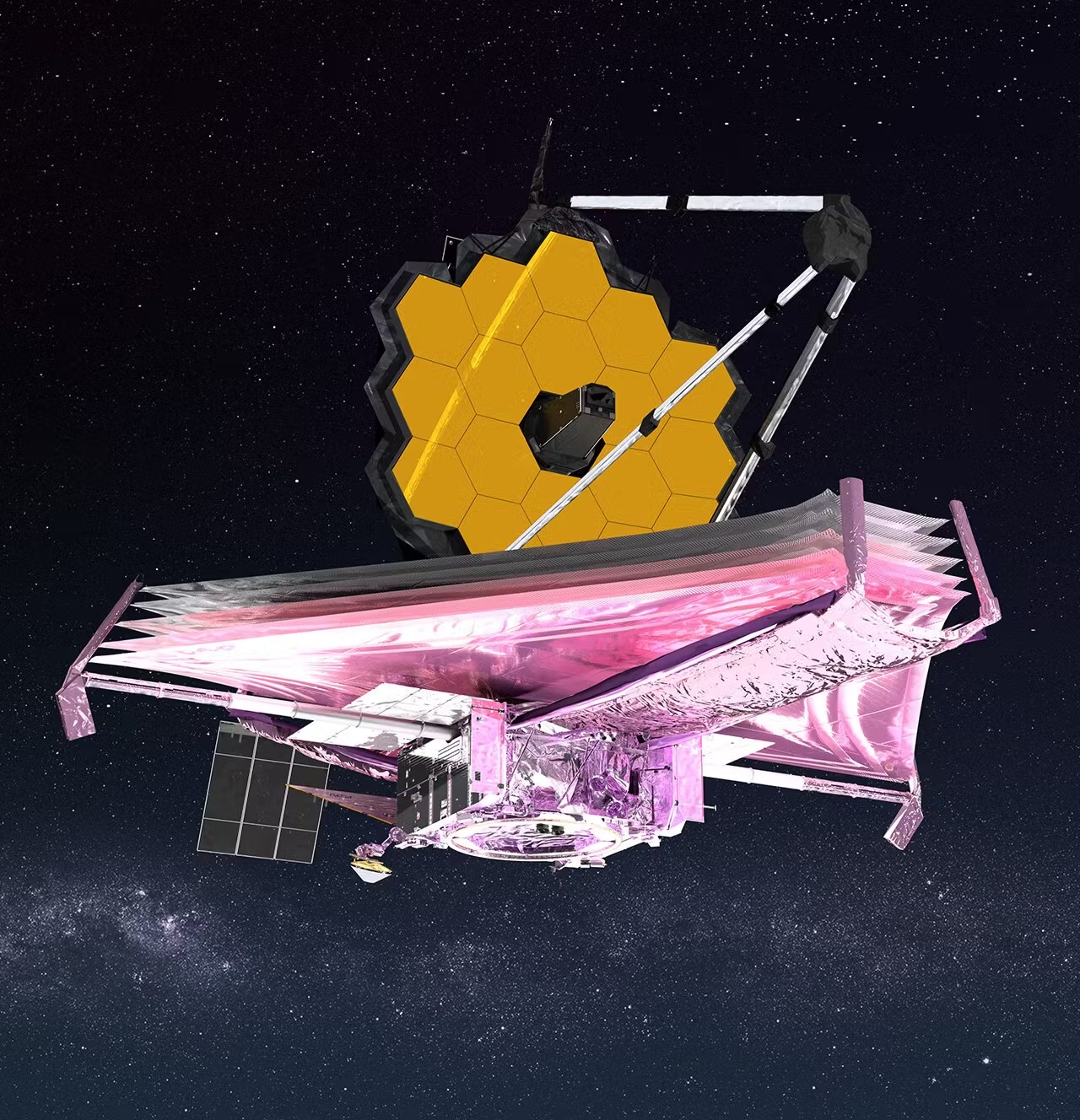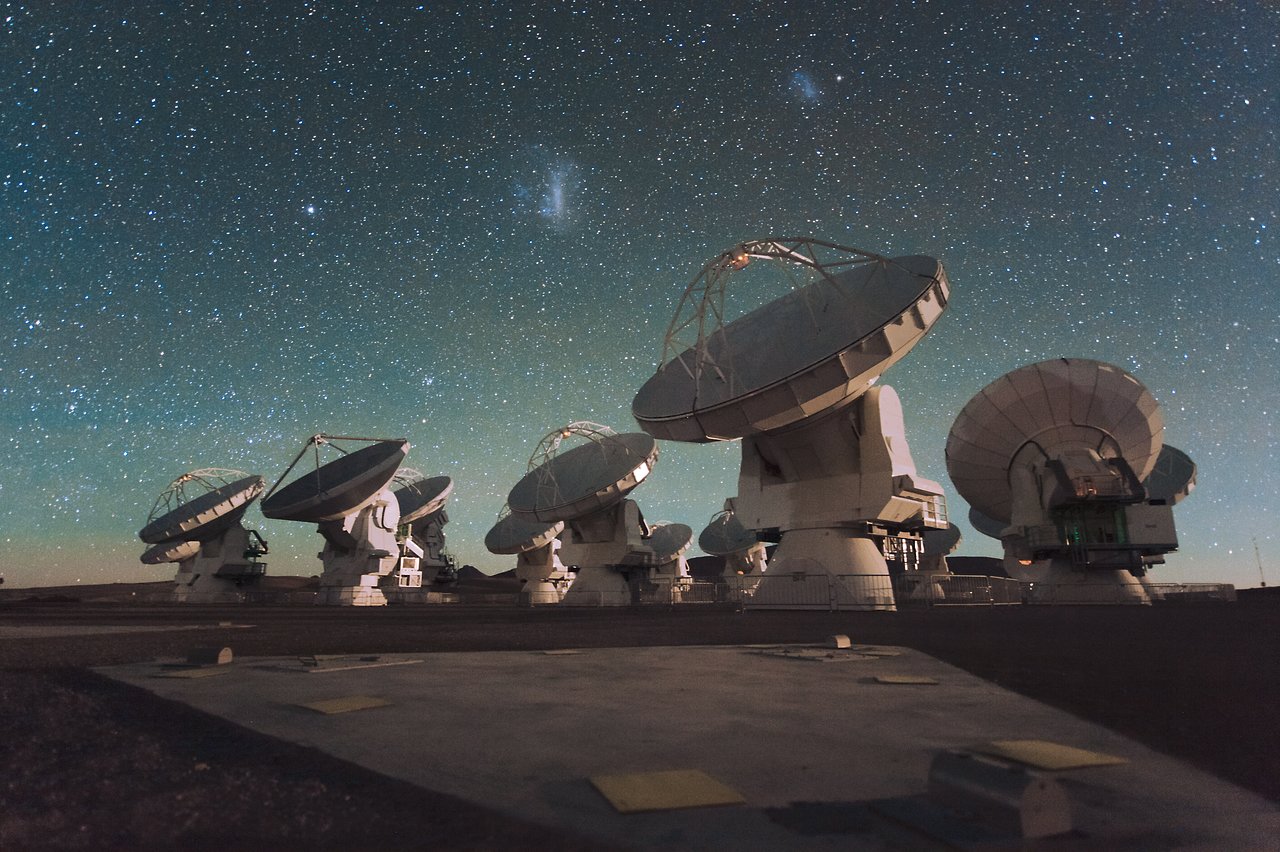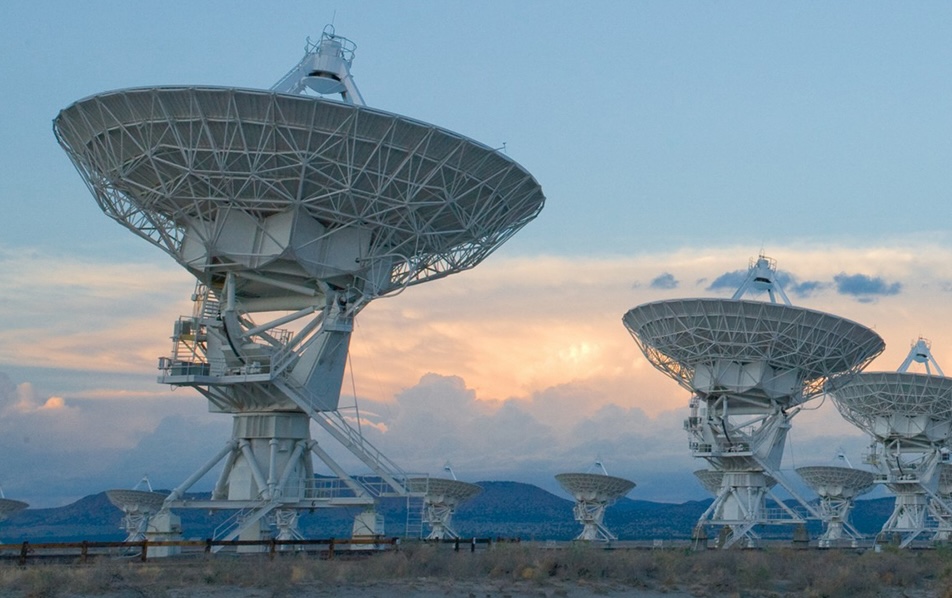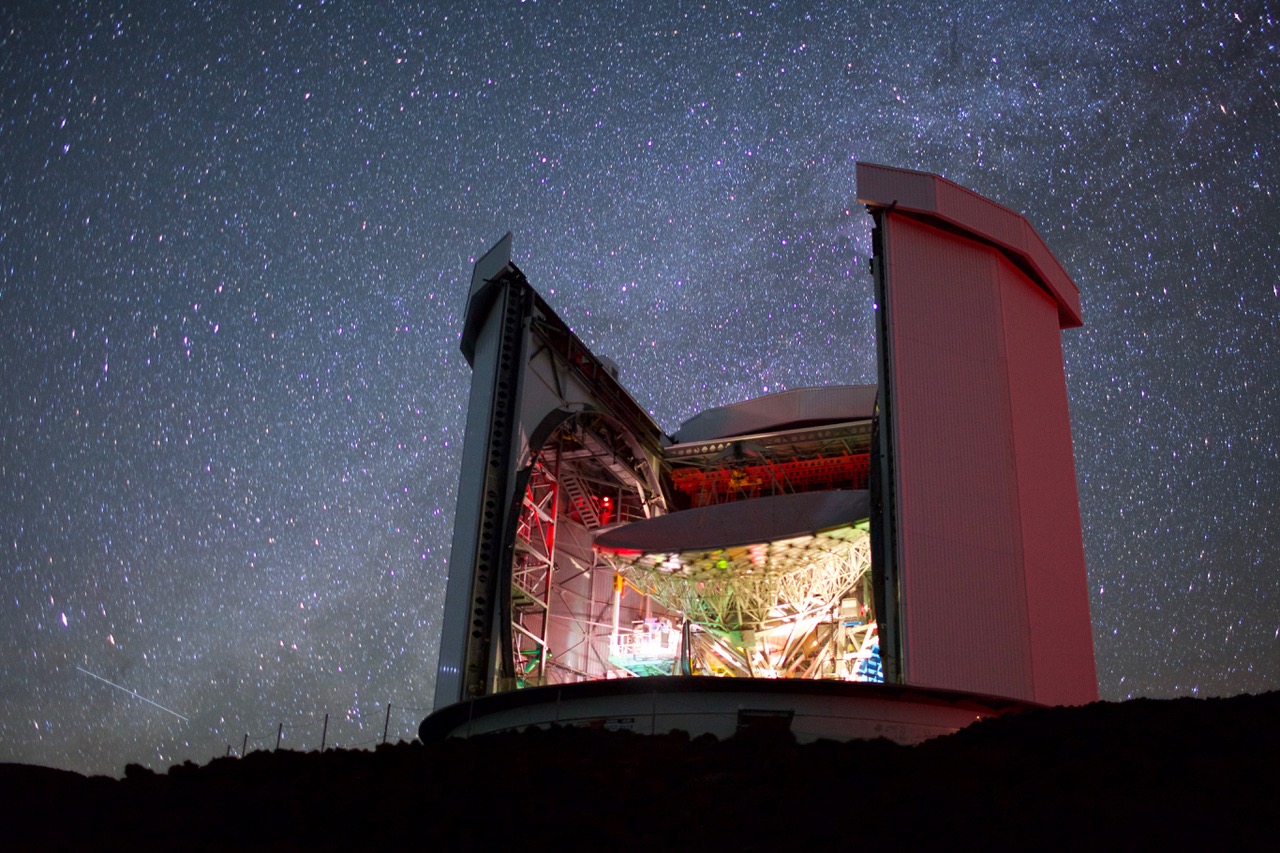
Dr. Ryan Chown
Astrophysicist with a passion for teaching
As of September 2025: Assistant Professor (Tenure-Track) at Algoma University
PHANGS-JWST Technical Working Group Lead
Previously: Postdoc in Astronomy at The Ohio State University and University of Western Ontario
About Me
I'm an astronomer studying the interstellar medium and galaxy evolution, using cutting edge infrared and radio telescopes, with a strong interest in teaching. I completed my BSc and MSc in Physics at McGill University, and my PhD in Astrophysics at McMaster University in 2021. From 2021-2023 I was a postdoc in the Department of Physics and Astronomy at the University of Western Ontario, and from 2023-2025 I was a postdoc in the Department of Astronomy at The Ohio State University. In September 2025 I will be starting a new position as an Assistant Professor in the Department of Computer Science and Mathematics at Algoma University.
My Work
The question at the heart of my research is: how do the fundamental ingredients of the matter cycle in galaxies -- gas, dust, and stars -- interact to shape the structure and evolution of galaxies? My work spans from high-resolution studies of the Milky Way to spatially-resolved analysis of nearby galaxies, with a focus on understanding the physical processes that shape the interstellar medium across different environments and metallicities.
I work in collaboration with an amazing group of colleagues around the world. As a member of the Physics at High Angular Resolution in Nearby Galaxies Survey (PHANGS) collaboration, I lead the technical working group focused on the reduction and analysis of JWST data, and I lead scientific analyses of the PHANGS-JWST data, with particular focus on the relationships between tracers of cold gas (CO) from ALMA, and PAH emission across nearby galaxies at high resolution with JWST. I also lead JWST-focused science work in the Local Group L-Band Survey (LGBS) collaboration, which is studying the nearest low-metallicity dwarf galaxies with best-in-class 21 cm HI mapping from the VLA. I am also a member of the PDRs4All team (I previously led the data reduction working group), which obtained some of the very first JWST observations ever taken. These data provide an unprecedented view of the Orion Nebula, a prototypical star-forming region in the Milky Way.
I am also passionate about teaching. I have been a teaching assistant for 13 first- and second-year undergraduate physics and astronomy courses. These classes included 50-800 students, some for physics majors and some for non-majors. I have also mentored undergraduate research projects (letters of feedback available upon request). I completed an intensive teaching certificate at the University of Western Ontario (the Western Certificate for University Teaching and Learning).
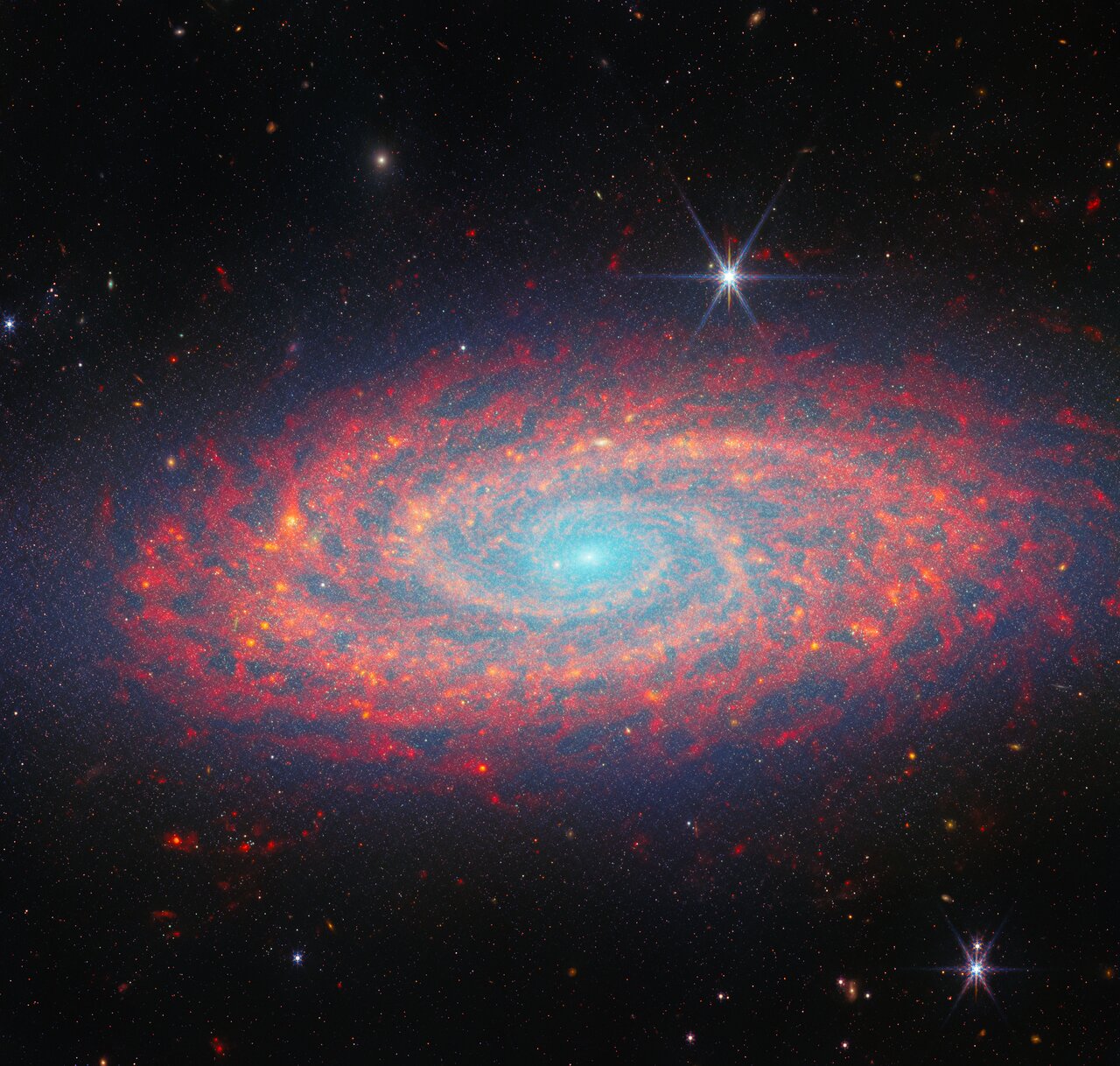
The life cycle of fundamental ingredients of the ISM in nearby galaxies
Cold molecular gas (H₂) is the fuel for star formation, but it is not directly observable. Instead, astronomers use radio wavelength emission from the second-most abundant molecule, carbon monoxide (CO), to trace this gas. Much of my recent work has focused on a) understanding an apparently ubiquitous relationship between CO emission and mid-infrared emission from another important class of molecules called polycyclic aromatic hydrocarbons (PAHs), and b) understanding the life cycle of PAHs in the ISM. With JWST, we are now able to study the CO versus PAH relationship at unprecedented spatial resolution and sensitivity, allowing us to probe the structure of cold gas at a level of detail that is not possible with CO.
Image: JWST (NIRCam + MIRI) composite image of NGC 2090 showing dust and PAH emission (red) and starlight (blue).
Credit: ESA/Webb, NASA & CSA, A. Leroy. Link to original image.
Overview
As a postdoc at The Ohio State University, I'm conducting a comprehensive study of the relationship between cold gas (H₂ and HI) and polycyclic aromatic hydrocarbons (PAHs) across different galaxy environments. This work is done in collaboration with the Physics at High Angular Resolution in Nearby Galaxies Survey collaboration (PHANGS). My work spans from analyzing PHANGS-JWST images of nearly 75 massive spiral galaxies at ~50-150 pc resolution (one such image is shown above) to studying the nearest low-metallicity dwarf galaxies (NGC 6822 and the Wolf-Lundmark-Melotte galaxy, or WLM) at the unprecedented resolution of ~2 pc, where the structure of individual molecular clouds can be seen in great detail. The latter work is done in collaboration with the Local Group L-Band Survey team (LGBS). This multi-scale approach allows me to investigate how the CO-PAH relationship varies with metallicity and galactic environment. Characterizing this relationship across environments helps us establish PAH emission as a sensitive, high-resolution tracer of cold gas.
Image Gallery

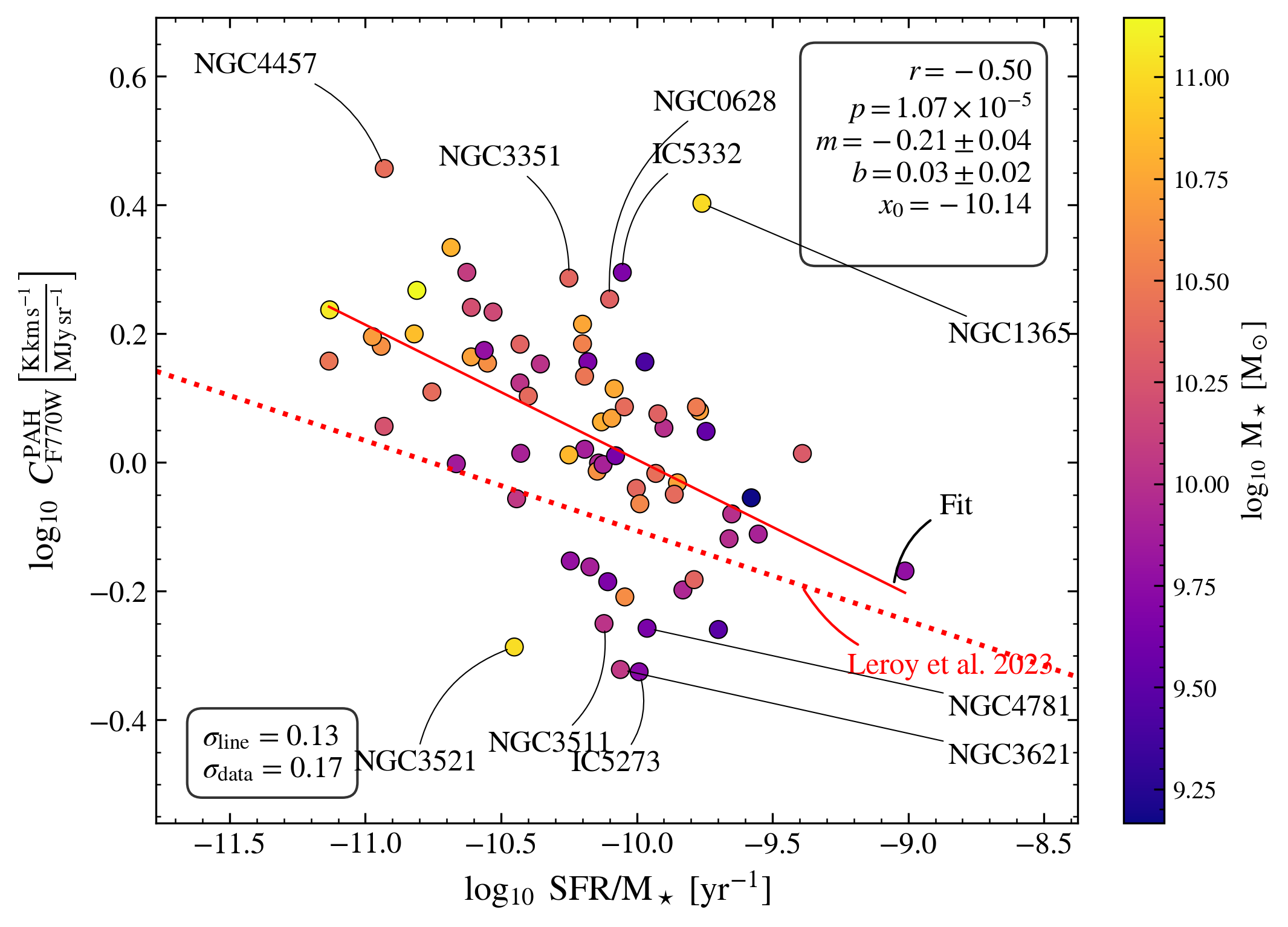
Recent Publications:
1. R. Chown et al., "Polycyclic Aromatic Hydrocarbon and CO(2-1) Emission at 50-150 pc Scales in 70 Nearby Galaxies", accepted for publication in ApJ (2025). arXiv link.
2. A. Leroy et al., "PHANGS-JWST First Results: Mid-infrared Emission Traces Both Gas Column Density and Heating at 100 pc Scales", ApJL Volume 944, Issue 2 (2023). arXiv link.
3. R. Chown et al., "A new estimator of resolved molecular gas in nearby galaxies", MNRAS Volume 500, Issue 2 (2021). arXiv link.
Images above from Chown et al. (2025)
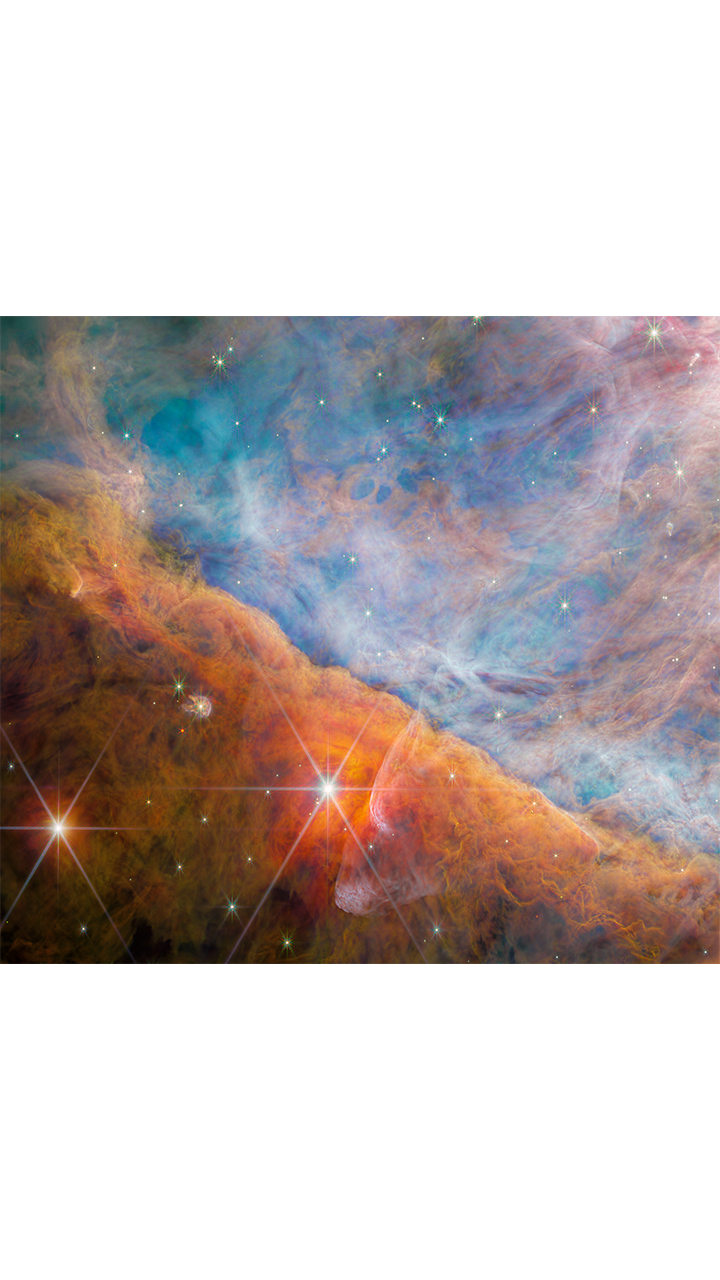
The Impact of Stars on Interstellar Dust in Our Own Backyard
During my postdoc at the University of Western Ontario, I led the first analysis on polycyclic aromatic hydrocarbon (PAH) emission from the JWST Early Release Science (ERS) program #1288 PDRs4All, which mapped the Orion Bar, a prototypical star forming region in the Milky Way. PDRs4All was one of 13 ERS programs, whose data were taken in the first days of the mission after the launch on Christmas Day, 2021. A major science goal of the program was to understand the origins and evolution of polycyclic aromatic hydrocarbons (PAHs) in the interstellar medium. On Earth, PAHs are a common component of car exhaust and barbecue smoke. In space, they are a vital component of the interstellar medium, where they glow brightly in the near- to mid-infrared (their emission is particularly bright between about 3-15 μm). PAHs are thought to be formed when stars shed their outer layers, and are then swept up into the ISM to lead busy and important lives (we would not exist without them). However, their formation and destruction processes are not well understood.
Image credit: ESA/Webb, NASA, CSA, Mahdi Zamani, PDRs4All
Overview
As part of the PDRs4All team, I led a paper where we discovered the first evidence of photo-processing of PAHs as a function of distance from ionizing stars within a single PDR. This research examined how radiation from massive stars affects the surrounding interstellar medium in the Milky Way. Thanks to the incredibly high quality of the data from JWST, I produced what now represents a major reference for mid-infrared spectra of PDRs for years to come, and a catalog of PAH features, many of which were new discoveries. Along with this, I led another paper comparing the uniquely high-quality imaging and integral field spectroscopy data, to produce empirical prescriptions for measuring spectral features (e.g. line intensities) from imaging data alone. These prescriptions can be used in other galaxies to estimate the intensity of spectral features from imaging data alone.
Image Gallery

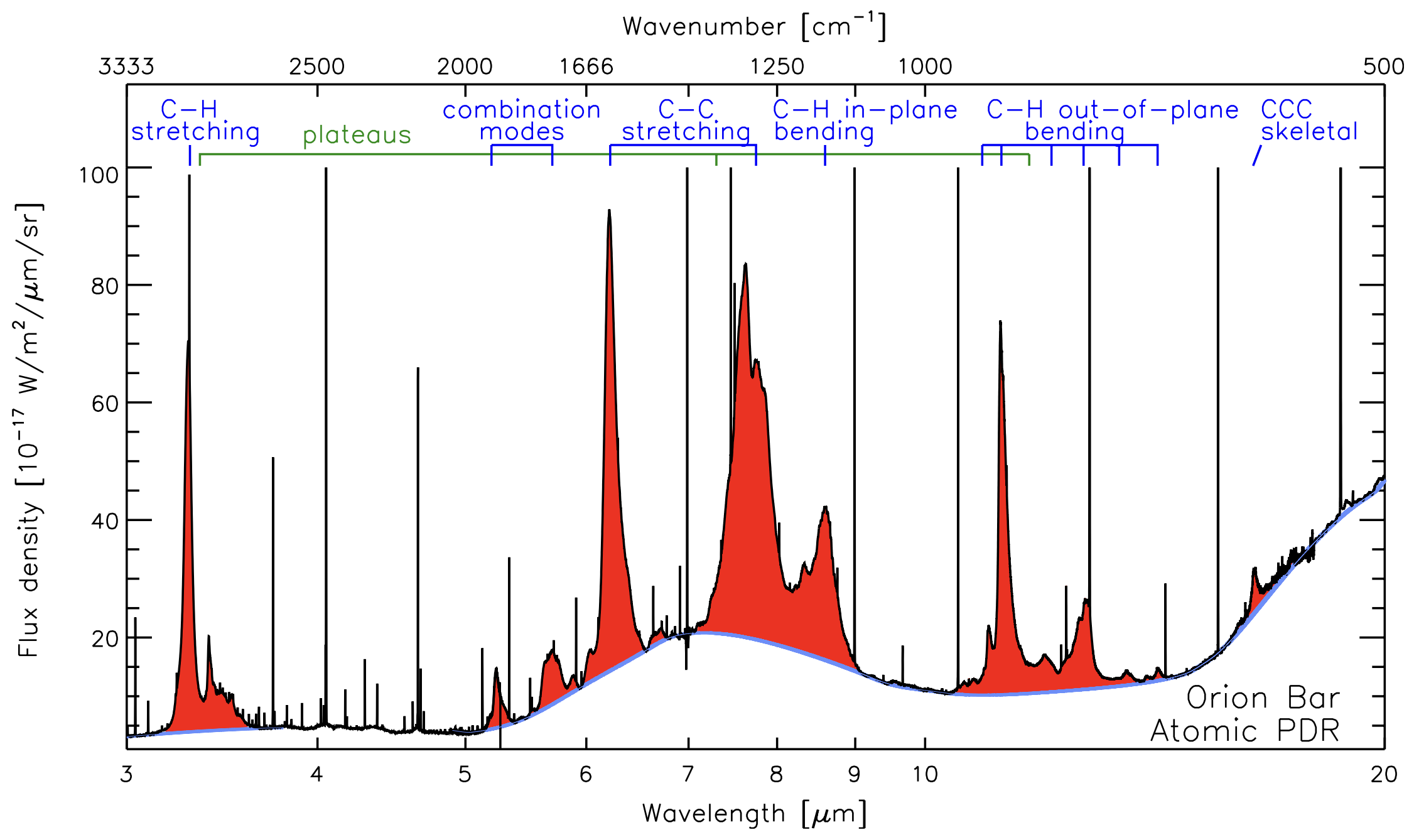
Recent Publications
1. R. Chown et al., "PDRs4All. IV. An embarrassment of riches: Aromatic infrared bands in the Orion Bar", A&A, 685 (2024). arXiv link.
2. R. Chown et al., "PDRs4All XI. Empirical prescriptions for the interpretation of JWST imaging observations of star-forming regions", Submitted to A&A (2025). arXiv link.
Curriculum Vitae
Download my CV here.
A list of my publications can be found here.
Contact
Email: chown dot 5 at osu dot edu
Department of Astronomy
The Ohio State University
Columbus, OH
